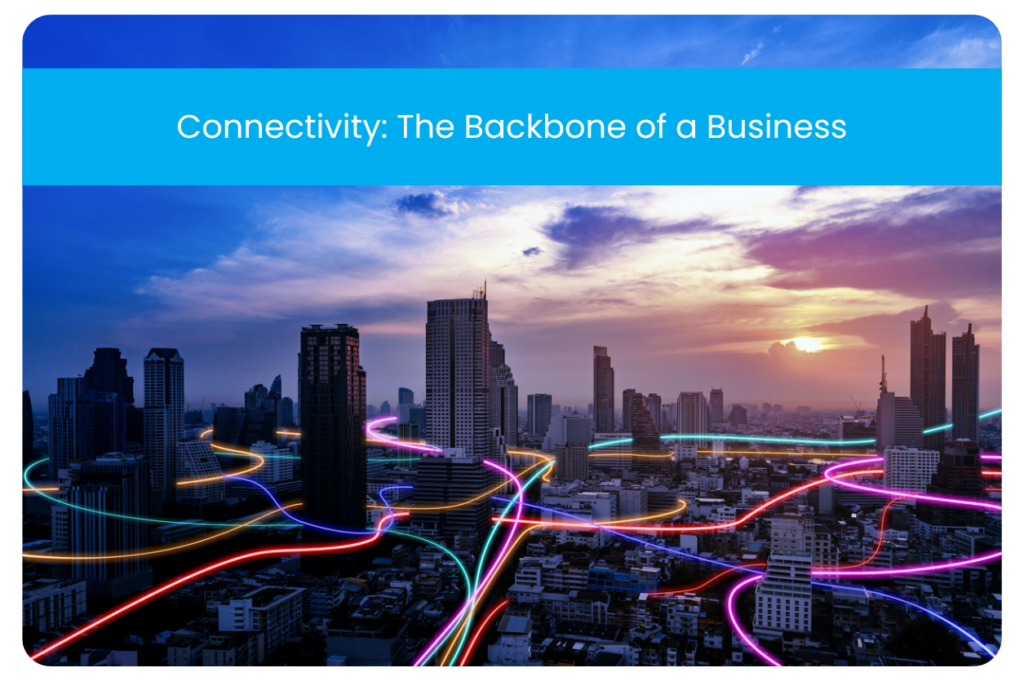Your Connectivity Is No Longer a Commodity
Why Networking Has Become an Operational Asset and The Conduit to Better Business Outcomes
Historically, networking was viewed as a commodity. A necessary component of a technology stack that was only noticed when it wasn’t working properly. It was a line item on the budget, a cost to be cut. Today, networking is a critical business enabler for distributed and global industries.
Why? Your network’s connectivity is an operational asset and a major driving force for the growth and innovation of your organization.
Commoditization often removes a product’s individual characteristics and brand identity so that it becomes interchangeable with other products of the same type. Making commodities interchangeable allows for competition based solely on price instead of a network’s most important attributes, such as reliability, security, and simplicity.

TechTarget has reported that network downtime costs organizations between $250k and $700k annually, with the average falling at $600k.
TechTarget has reported that network downtime costs organizations between $250k and $700k annually, with the average falling at $600k. At the high end, Amazon.com was down for 13-15 minutes in 2012. Forbes estimates that this quarter of an hour cost the company $66,240 per minute in revenue, for a grand total of nearly $1,000,000. Various costs factor into the total impact of network downtime. These include lost revenue, reduced productivity, and reputation damage.

Connectivity has moved a long way from the days of speeds and feeds in which the only thing that business owners cared about was the speed-to-cost ratio.
Connectivity is now the backbone of a business, and that shift has caused it to break away from the “table stakes” category. It is no longer feasible to prioritize price alone as the single metric for making these critical infrastructure decisions.
Today’s Connectivity Challenges
Today’s global networks are complex. This is true for enterprises scaling the nation or the globe. Connectivity is delivered through a myriad of customer or carrier-owned and leased circuits and equipment. This complexity leads to both network fragility and challenges with network security. It also increases both ‘hard costs’ like carrier contract prices and ‘soft costs’ such as managing multiple carrier and ISP contracts, SLA’s and MSA’s.
SD-WAN (Software Defined Wide Area Networks) addresses some of this by creating agile and flexible connectivity using the internet as the backbone. While this is adequate for many classes of network traffic, SD-WAN alone comes with its own challenges and relies entirely on the underlying network performance to deliver value.

The internet is a global attack surface. Traffic on the internet is exposed to malicious actors around the globe. While encryption through tools like VPNs (virtual private networks) protects the data, it can add cost and complexity. At the same time, VPN traffic traverses the public internet and is exposed to potential threats.
The internet is designed for scale and resilience, not performance and reliability. While this works for many types of applications, like email and messaging, it poses challenges for critical business applications with specific requirements like low, predictable latency, high throughput, etc.
Both problems can be solved by using private circuits, but that adds more carrier cost and complexity. Customers are often forced to use multiple carriers and ISPs (Internet Service Providers) for global links, data center and office connectivity, etc. This means more contracts and their associated costs.
Connectivity is Your Strategic Asset
When we say that connectivity is a conduit to better business outcomes and employee productivity, we mean it. Your network is the glue bonding every aspect of your business together. Here are just a few scenarios illustrating how connectivity has a big impact on your operations – both positively and negatively:
It’s time to dazzle in your QBR, but the Voice or Video Conferencing system suffers from a myriad of problems. Dropped calls, low call quality, echoes, hissing, and gaps in conversation occur due to unpredictable internet connectivity performance.
Unreliable internet connections to SaaS applications and platforms slow down productivity. Every time an employee accessing their apps has to wait for load times and file saves due to poor performing networks productivity and morale suffer.
Critical workloads and sensitive data traversing the public internet across VPN networks open a potential threat vector and increased attack surface.
Ensuring non-internet traffic stays off public internet links with private L2 connections provides enhanced predictable performance.
Leveraging private connections reduces your threat vector increasing your security while reducing cost and network complexity.
With the help of solutions like One Pipe Multi-Connect®, Premium Blended Internet, and Office-to-Office Connect, all of your branch locations are able to securely communicate while ensuring that networks remain simple and scalable.
As you can see in the examples above, the implications of unreliable networks are far-reaching. One network brownout, poor quality connection, or successful ransomware attack that puts data at risk can drive a wedge between you and your customer base.

Conversely, empowering your teams with lightning-fast connection times and reliable communications can enhance productivity and provide better customer experiences, increasing profit, boosting efficiency, and improving employee morale and customer satisfaction.
Thankfully, CEOs, CIOs, and CISOs are collaborating more than ever to ensure telecom best practices are constantly employed. Cybersecurity budgets continue to grow as leaders observe the real-world return on investment (ROI) of investing in the right infrastructure. This contrasts with the limited focus on network stability and security.
When you embrace the concept that your network is an operational asset and a major driving force for the growth and innovation of your organization, a concept that requires reliability, security, and simplicity, your organization will have a rock-solid foundation to build upon for decades.
Taking the Next Steps
This all sounds great in theory, but the Massive Networks team knows that it can be difficult to visualize and implement the correct networking strategy, especially if you’re not sure where to start.
Massive Networks understands the challenges of delivering reliable connectivity for distributed businesses. That understanding has led to a series of carrier offerings that unify your connectivity needs on a reliable, secure, and simple network. Offerings that can be custom-fit to your unique needs with the help of Massive’s expert support teams.

We invite you to sign up for a completely free and private workshop experience with one of our expert Network Specialists to learn exactly how to leverage your network as an operational asset and a major driving force in the growth, performance, and success of your organization. Get tactical in your approach to network design and learn the strategy behind modernizing WAN.
After all, connectivity is not a commodity!








